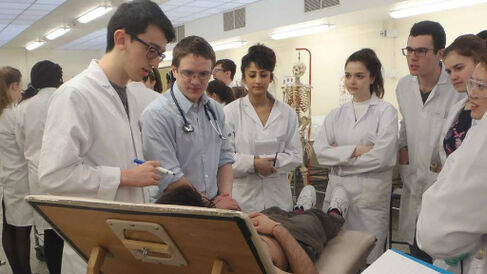The Preclinical Course - Years 1 & 2

1st Year: MedST Part IA
Functional Architecture of the Body: Topographical and clinically applied anatomy through cadaveric dissection.
Histology: Microscopic structure of cells and tissues, with emphasis on the correlation between structure and function.
Homeostasis: Physiological systems which underpin the body's regulation if its internal environment and its responses to external threats.
Foundations of Evidence-Based Practice: Introduction to epidemiology and statistic in medical sciences.
Molecules in Medical Sciences: Principles of biochemistry and medical genetics.
Preparing for Patients: Visits to GP surgeries, hospitals, community-based health-related agency, and meetings with a pregnant woman and her family.
Social and Ethical Context of Health and Illness: Cultural aspects of healthcare.
2nd Year: MedST Part IB
Biology of Disease: All aspects of disease, including knowledge of the causes and effects of disease, and the organisms response to disease.
Head and Neck Anatomy: Understanding of the structure and organisation of the human head and neck, with a focus on the relationship of structure to function.
Human Reproduction: Scientific basis for understanding how we reproduce: a fundamental element of our survival as a species.
Mechanisms of Drug Action: Basic mechanisms of drug action at the levels of both drug-receptor interactions and the effects on body systems.
Neurobiology and Human Behaviour: Structure and function of the central nervous system, basic principles of neurobiology and basis for common neurological and behavioural problems.
Preparing for Patients: Visits to GP surgeries, hospitals, community-based health-related agency, and meetings with a pregnant woman and her family.
